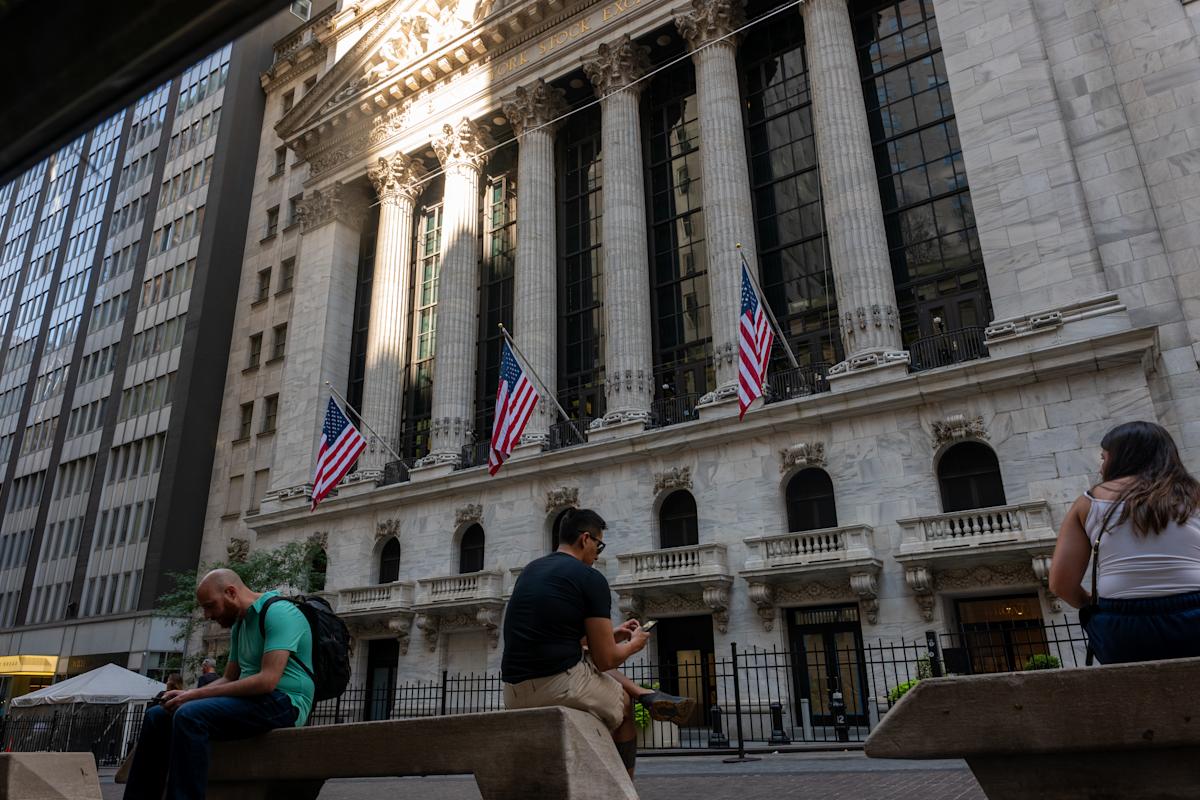US stocks experienced a decline on Thursday as Wall Street grappled with mixed economic signals, notably an unexpected dip in jobless claims. This development has complicated discussions surrounding potential interest rate cuts from the Federal Reserve, as it suggests a labor market that remains resilient despite earlier concerns of weakening economic conditions.
### Economic Landscape
The Dow Jones Industrial Average slipped by 0.1%, while the S&P 500 declined approximately 0.4%. The tech-heavy Nasdaq Composite fell more than 0.5% primarily due to struggles from major companies like Oracle, which faced investor skepticism following recent high valuations. The downward momentum comes after two consecutive days of losses earlier in the week, indicating that stocks may be recalibrating after a record-breaking rally driven by excitement over artificial intelligence.
The labor market’s health was underscored by the Labor Department’s report, which revealed that jobless claims had dropped to 218,000 for the week ending September 20, down from 232,000 the previous week. This decrease contradicts forecasts that anticipated a rise, suggesting a labor market less fragile than earlier presumed. Continuing claims also fell slightly to 1.92 million, indicating that people are finding work more easily.
In parallel, the US economy rebounded significantly in the second quarter, recording a GDP growth rate of 3.8%, a notable recovery from the 0.6% decline in the first quarter. This positive economic growth, countered by uncertainty and the debates among Federal Reserve officials concerning monetary policy, may temper hopes for further interest rate cuts in the near term.
### Market Dynamics and Corporate News
Investors are wary as the speculative enthusiasm about AI raises questions about inflated stock valuations. The Federal Reserve’s recent pivot towards potential rate cuts provided initial support for the markets but may be losing traction as divisions within the Federal Reserve’s policymaking body become more apparent.
Key corporations are in the spotlight, with Oracle experiencing significant declines following a new Sell rating from Redburn analyst Alex Haissl. He cautioned that the market’s expectations of Oracle’s cloud business growth at current valuations are overly optimistic. With shares trading around $297 and a price target set at $175, the analysis reflects broader concerns regarding lofty valuations in the tech sector.
Conversely, IBM stock rose over 3% thanks to positive sentiment regarding its quantum computers, which reportedly helped HSBC enhance its forecasting capabilities. Such advancements underline the transformative potential of technology in financial services, even as other sectors, like used car sales, show more volatility—evident when CarMax’s shares plummeted 12% after missing earnings estimates.
### Fed Policy and Market Expectations
The markets’ response to economic data highlights the delicate balance the Federal Reserve must strike. With falling jobless claims and a vibrant GDP report, narratives predicting a weakening economic landscape are becoming more complicated. The expected release of the Personal Consumption Expenditures (PCE) index, the Fed’s preferred measure of inflation, will further inform discussions around interest rates. A lower PCE might bolster calls for continuing rate cuts.
Additionally, the impending threat of a government shutdown is casting a shadow over market optimism. As federal agencies prepare contingency plans, uncertainties about employment and federal spending loom—potentially impacting economic stability.
### Conclusion
The interplay of strong economic indicators, investor sentiment, and Federal Reserve policies creates a complex landscape for the stock market. While positive job market data and GDP growth suggest resilience, internal divisions within the Federal Reserve about rate cuts introduce added uncertainty. Meanwhile, company-specific news and sector performance lend mixed signals about the broader market trajectory.
As investors navigate these shifting dynamics, it’s clear that while the economic backdrop provides some comfort, vigilance will be necessary in this unpredictable environment. The future may hinge not just on favorable economic indicators but also on how effectively policymakers can address the nuanced tensions between growth and inflation, stimulating the necessary confidence to sustain market momentum. The coming days will be pivotal, especially with key economic data releases and corporate earnings reports shaping the narrative further.
In summary, amid the fluctuation in stock values and changing economic signs, investors will need to keep a close eye on both macroeconomic indicators and individual corporate shifts to craft informed strategies moving forward.
Source link










